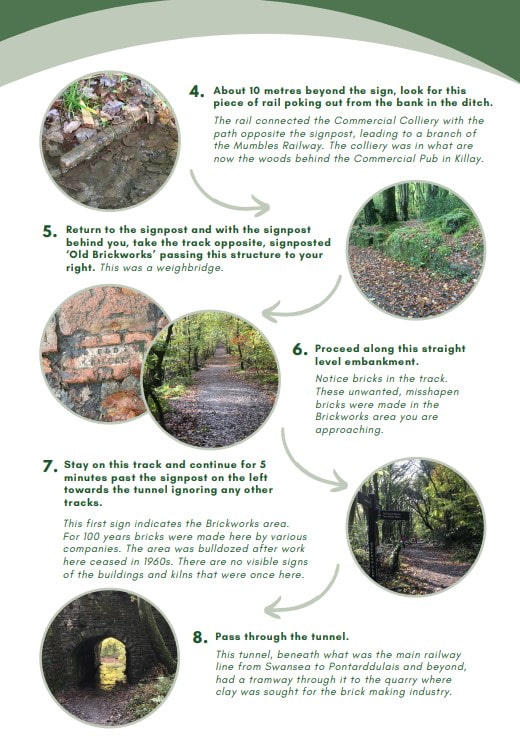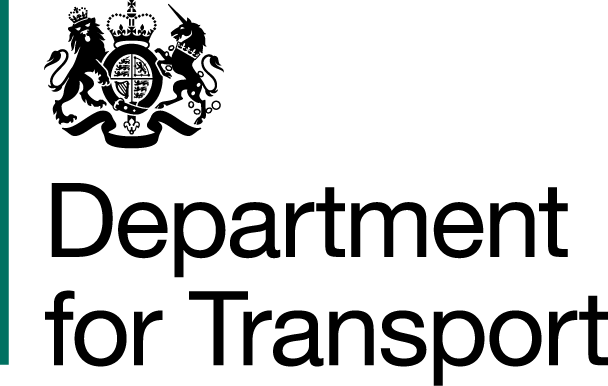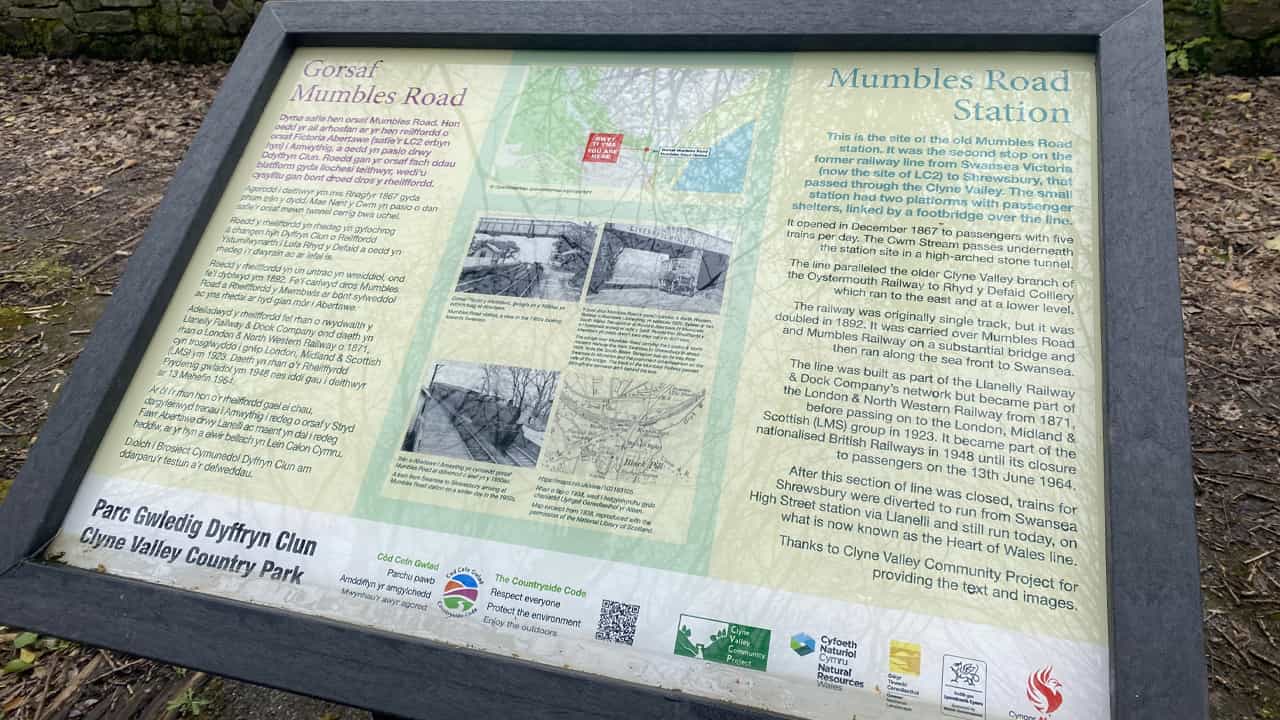
The Clyne Valley
As Britain prepares to mark 200 years since the first steam powered passenger rail journey, we are taking a look back at some of the fascinating history within Wales and the Borders.
The Stockton and Darlington Railway saw that first journey on 27th September 1825 with circa 550 fare-paying passengers travelled 27 miles in less than three hours reaching speeds of 15 mph.
Contributing to that momentous step were the achievements in Wales to help forge that spark of industrial revolution.
It was in fact the Swansea and Mumbles Railway that had the title of first fare-paying railroad - with horses, not locomotives providing the pulling power. From those humble origins, the city in south west Wales saw passenger and goods lines spring up in a frenzy over the next 60 years with lines supporting industries such as copper, coal and brickworks.
Today, there are still plenty of clues to show how the railway helped shape the city.
A train ride to Gowerton on the west of the city brings you to the start of a cycle path on what was once the old railway line linking Swansea to Pontarddulais and beyond.
Several branch lines had already been built linking the Mumbles railway to collieries in the Clyne Valley, before the main line was built by the Llanelly Railway and Dock Company. This helped them gain access to an area that had become a major centre of industry and a fast-growing port. Passenger travel soon followed and from Gowerton, there were stations at Dunvant, Killay and Mumbles Road, opened in 1867, before the line linked into the terminus of Swansea Victoria Station, which is now a thriving leisure centre.
“We’d like it to be renamed ‘the old railway path’,” said Barbra Parry from the Clyne Valley Community Project, who have been helping look after the Country Park for the last 13 years.
“We’ve been working closely with Swansea Council’s Environmental Section to get funding for information and interpretation boards as well as steps to make it more accessible, whilst not losing its wild feel.”
Recently the group have cleared up some of the old stations along the route so you can now clearly see the remains of platforms at what were once Dunvant, Killay and Mumbles Road Stations. The old station houses can also be seen at Dunvant, while at Killay the old station house is now a pub and microbrewery.
The path runs from Gowerton all the way down to Swansea Seafront at Blackpill through the heart of the Clyne Valley. Further north other sections of the old line have been made into paths linking Gorseinon to Pontarddulais and from Gowerton across to Penclawdd on the Gower.
Along the way if you look carefully you can see up to nine pillboxes along the line and across the valley paths. These concrete structures were built as defensive positions to protect the line and infrastructure during the Second World War in case an invasion took place.
There have also been a number of paths developed going off the main path which can pick up points of interest such as the old Dunvant Brickworks, Clyne Valley Brickworks and Clyne Valley Colliery.
Those industries had their own rail and tramways within the Clyne Valley and the remnants of these can be seen when exploring the area.
“There is so much history in the valley connected to the railway,” added Barbara.
“It was a poor area until the 1800s when lots of little industry started springing up in Dunvant and Killay.
“Various brickworks existed here for more than 100 years using the different lines, while there were several collieries here too. During the Second World War when many of the men were in the forces, women took on the role of cutting back the trees along the line and were known as ‘lumber Jills’ rather than ‘lumber Jacks’.”
The line closed in the 1960s, but over the next few decades the path was developed and has provided the perfect way of exploring the Clyne valley sustainably.
For more information about the Clyne Valley, it’s history and walks that take in the history, please visit: clynevalleycommunityproject.uk.
For tickets to Gowerton Station to start your journey though one corner of railway history click here.
(A map showing current and “lost” railway lines in the Swansea area. The grey lines show those no longer in existence.)
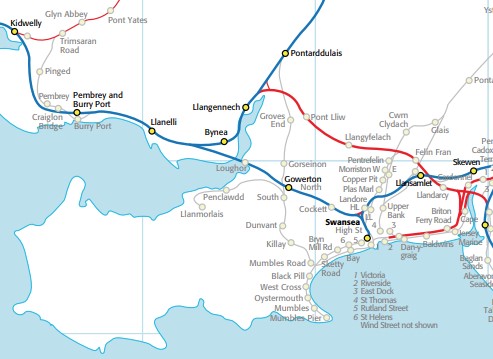
(A link to a video of one of the last trains on the route in the 1960s.)
player.bfi.org.uk/free/film/watch-swansea-victoria-pontardulais-railway-1964-june-1964-online
(Work going on to clean up the old platforms at Killay Station by the Clyne Valley Community Project.)
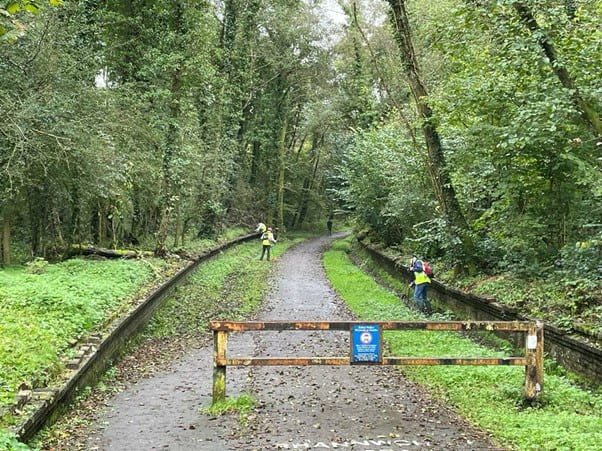
(The station as it was in the 1960s.)
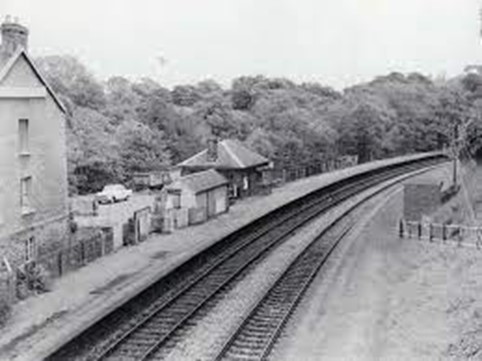
(An example of one of the walking leaflets the group produce to show sites of historical interest.)
